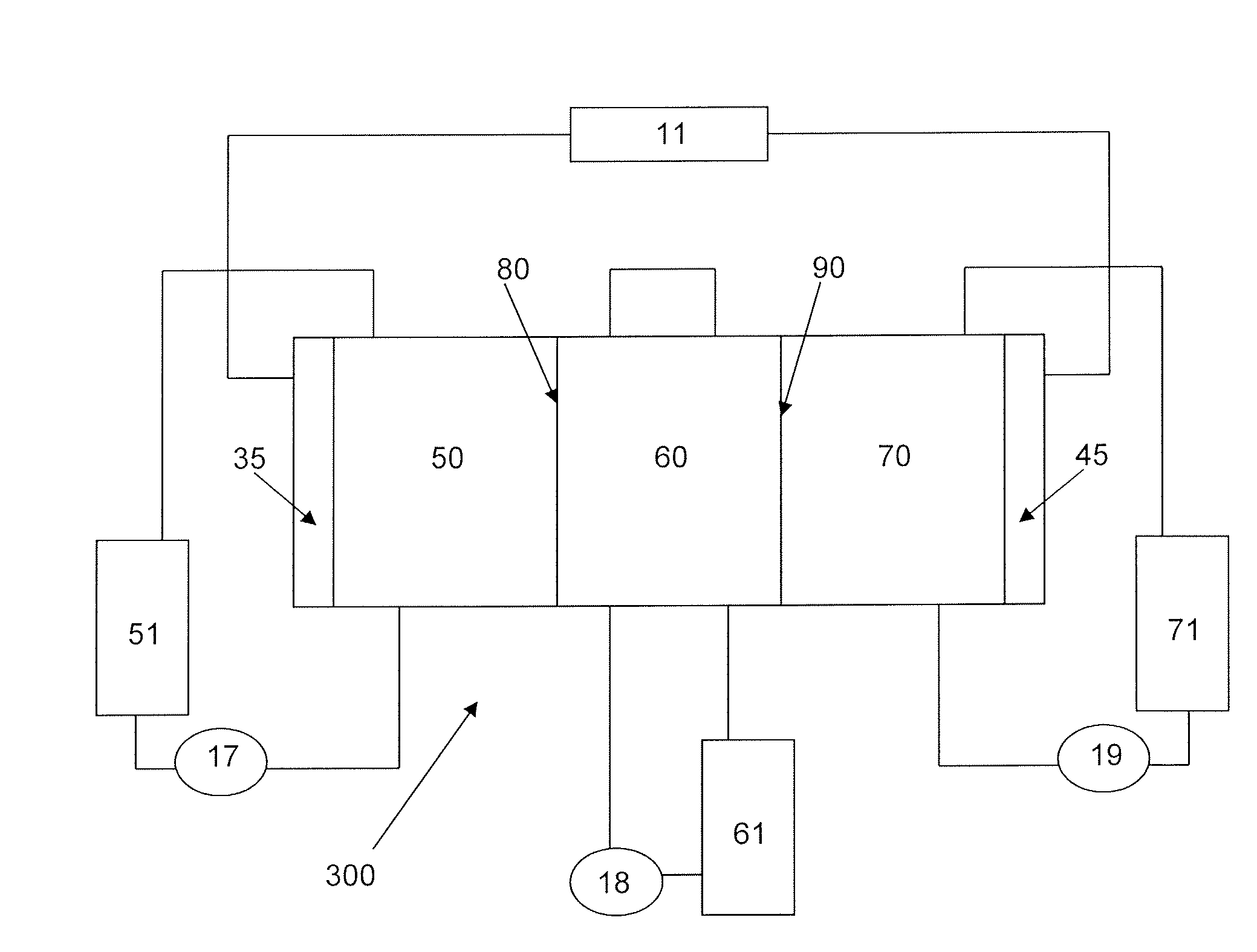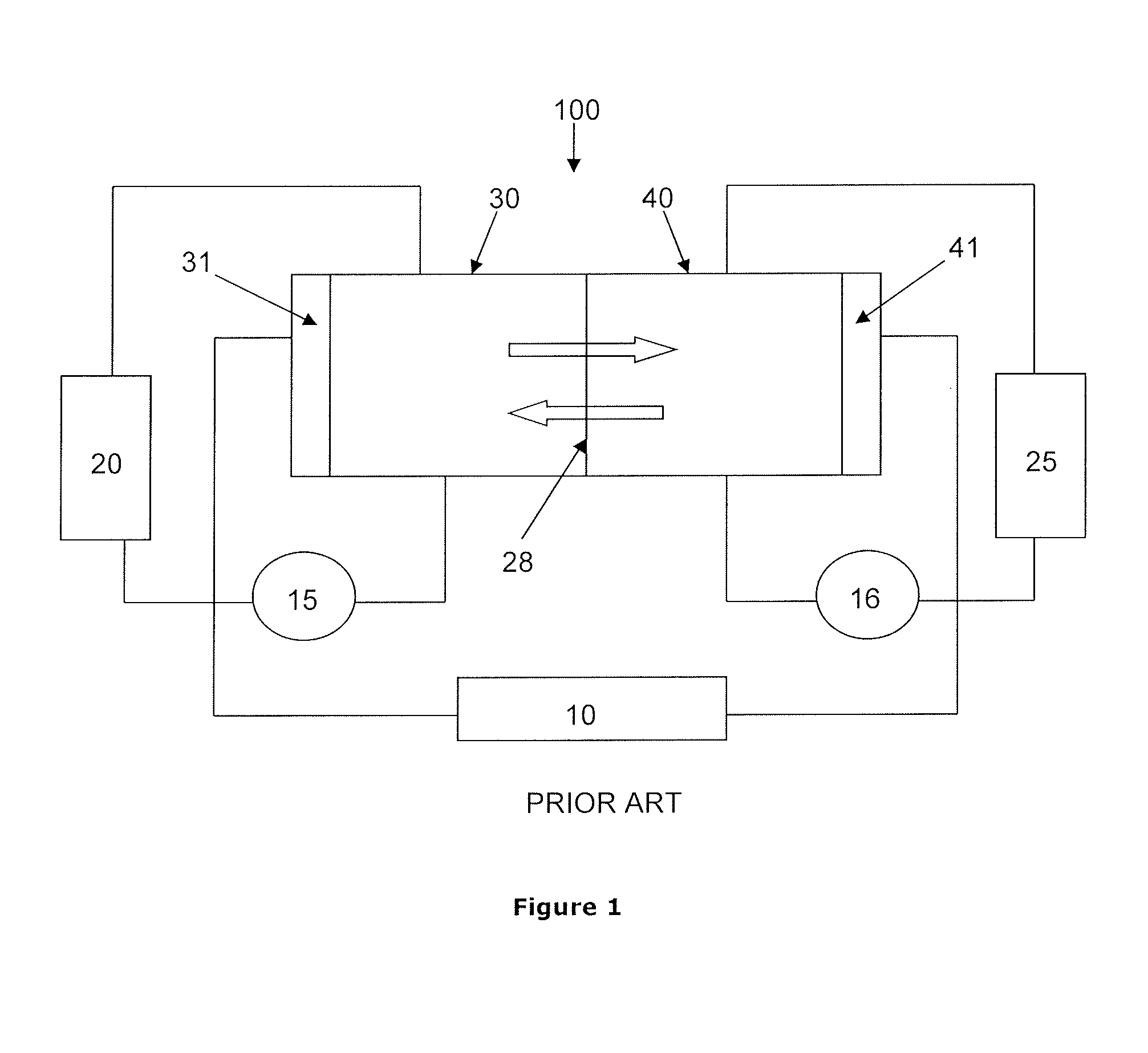Double-membrane triple-electrolyte redox flow battery design
a triple-electrolyte, battery technology, applied in the direction of secondary cells, non-aqueous electrolyte cells, indirect fuel cells, etc., can solve the problems of many challenging problems that remain unsolved, negatively affecting the cost-effectiveness of rfbs, and not reaching broad market penetration
- Summary
- Abstract
- Description
- Claims
- Application Information
AI Technical Summary
Benefits of technology
Problems solved by technology
Method used
Image
Examples
example 1
[0042]An aluminum-cobalt DMTE-RFB system (Al / Co-DMTE-RFB), configured as [(Al / Al(OH)4−) / / (Co3+ / Co2+)] was constructed. A three-compartment cell made up of three plastic jars was designed and used as follows. Three 50 ml plastic jars were put in series with a hole (a quarter inch of diameter) opened between adjacent two jars. The three jars, based on half-reaction inside, were assigned as negative, middle and positive compartments. One piece of Nafion® 212 membrane (DuPont, 50 μm thickness) and one piece of Fumasep® FAA membrane (FuMa-Tech, 70 μm thickness) were used as the CEM and AEM, respectively. The CEM is put between the negative compartment and the middle compartment while the AEM is put between the middle compartment and the positive compartment, along with an O-ring to seal the conjunction part. Two clamps were used to compress three jars tightly to avoid electrolyte leakage. A potentiostat / galvanostat (Solartron 1287A) was used in both OCV and discharge-charge cycle tests.
[...
example 2
[0044]A zinc-cerium DMTE-RFB (Zn / Ce-DMTE-RFB), configured as [(Zn / Zn(OH)42−) / / (Ce4+ / Ce3+)] was constructed. A three-compartment cell made up of three acrylic flow channels was designed and used as follows. Three 5 cm by 6 cm rectangular channels were put in series with membranes in between. The three channels, based on half-reaction inside, were assigned as negative, middle and positive compartments. One piece of Nafion® 1135 membrane (DuPont, 87.5 μm thickness) and one piece of Fumasep® FAA membrane (FuMa-Tech, 70 μm thickness) were used as the CEM and AEM, respectively. The CEM is put between the negative compartment and the middle compartment while the AEM is put between the middle compartment and the positive compartment, along with silicone gasket to seal the conjunction part. The positive electrode and negative electrode are each put next to its corresponding compartment, respectively. Two clamps were used to compress the three channels and electrodes tightly to avoid electrol...
PUM
| Property | Measurement | Unit |
|---|---|---|
| Electric potential / voltage | aaaaa | aaaaa |
| Efficiency | aaaaa | aaaaa |
Abstract
Description
Claims
Application Information
 Login to View More
Login to View More - R&D
- Intellectual Property
- Life Sciences
- Materials
- Tech Scout
- Unparalleled Data Quality
- Higher Quality Content
- 60% Fewer Hallucinations
Browse by: Latest US Patents, China's latest patents, Technical Efficacy Thesaurus, Application Domain, Technology Topic, Popular Technical Reports.
© 2025 PatSnap. All rights reserved.Legal|Privacy policy|Modern Slavery Act Transparency Statement|Sitemap|About US| Contact US: help@patsnap.com



